With Zoom conference calls replacing in-person meetings during the pandemic, many men discovered they didn’t project as active and youthful an appearance as they thought. Staring at yourself for several hours a day can reveal some uncomfortable truths. That’s one of the reasons we’re seeing more men come in for treatments such as BOTOX®, fillers, and even facelift surgery at our Los Angeles practice.
Driven by the desire to look confident and vigorous in both their professional and personal lives, men of all ages are seeking aesthetic treatments in greater numbers than ever. Typically, men are most concerned about the appearance of their necks and jaw lines, which can be addressed by a facelift.
But even though the fundamentals of facelift surgery are similar for both men and women—lifting and repositioning the underlying tissue and muscle and removing excess skin—there are unique techniques that surgeons must use to retain masculine features in a male facelift.
What Causes Facial Aging?
There are three primary reasons our faces age:
Sun exposure: Limiting the skin’s exposure to the sun is the one choice you can make to delay facial aging. It’s something that many people rarely think about until they begin seeing the toll taken by prolonged sun exposure.
Lost volume: Beginning in our late 30s and 40s, most people begin noticing that their face’s youthful volume starts to dissipate. This is most apparent in the midface, as nasolabial creases emerge and wrinkles develop at the corners of the mouth.
Relentless gravity: As our skin produces less and less collagen and elastin—which are essential for tight skin—gravity pulls down on the skin and underlying tissue. Sculpted jawlines and strong chins lose their definition, and the skin on the neck begins sagging.
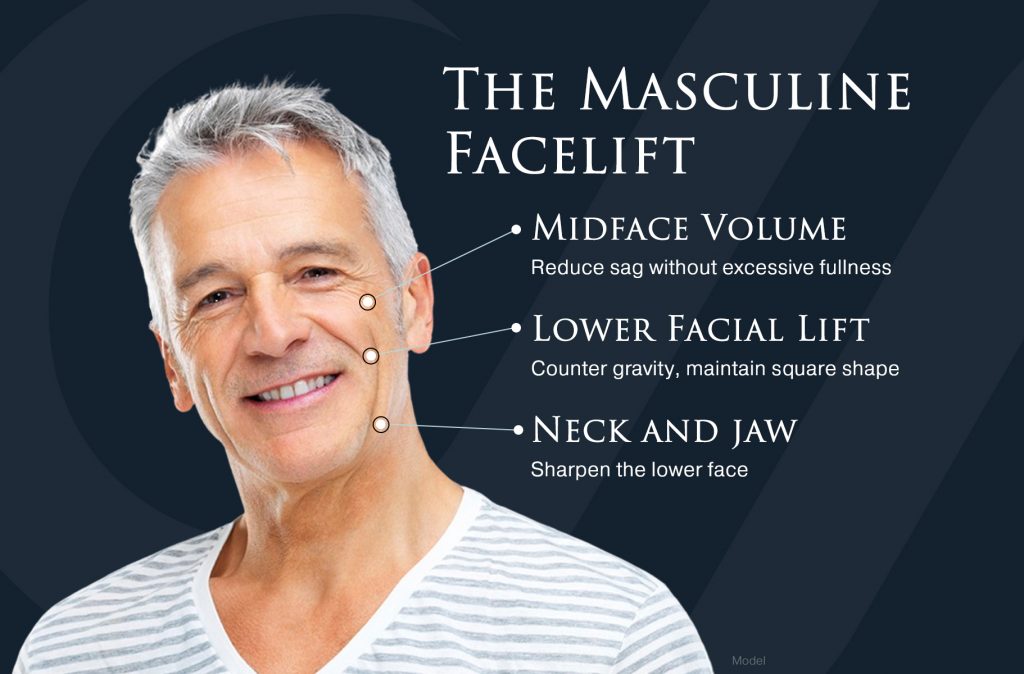
What Makes a Male Face Look Masculine?
Every person’s face—whether male or female—is unique. There are certain features, though, that are the hallmarks of a masculine face, just as a feminine face is associated with certain characteristics.
Men’s faces tend to be square, with a jawline that’s more sharp and angular than a woman’s oval face shape. Other facial features associated with masculinity include:
- A square, prominent chin
- Fuller upper eyelids and lower brows
- Thinner and flatter lips compared to a woman’s lips
- Flatter cheeks
Changes created by facelift surgery are limited to the lower two-thirds of the face, focusing on slack jowls, sagging neck skin, and hollowed-out cheeks. Even though the goal of any facial plastic surgery procedure is to create a more youthful appearance that still looks natural, that’s especially true for male patients. That’s why I developed the Traceless Facelift for patients at my Los Angeles practice; it’s a procedure that can be adapted for both men and women.
What Makes a Male Facelift Different?
One of the primary differences of a male facelift is the incision placement. Unlike women, men grow facial hair, and it’s imperative to avoid making incisions in the beard-growth area because it would move the growth closer to the ear. In short, it wouldn’t look natural.
Instead, I meticulously disguise incisions along the ears’ natural creases, camouflaging them so they’re virtually imperceptible after the procedure.
An experienced plastic surgeon also takes into account that men tend to have thicker skin, especially along the lower face, jaw, and neck, with fat that’s more fibrous than normally found in a woman’s face. This can make neck liposuction—which is often combined with a facelift—more challenging.
Most men who get facelifts want to retain a rugged appearance to some degree, so it’s vital not to produce results that look too smooth or remove the fine lines that contribute to a distinguished look.
Is There an Ideal Age for Getting a Facelift?
The ideal age for getting a facelift can vary depending on individual factors such as genetics, skin condition, and personal preferences. Men considering a facelift are typically in their late 40s to 60s. Some men start experiencing noticeable signs of aging earlier, while others have more resilient skin and postpone the procedure until their 50s or 60s. The key factor in deciding the right time for a facelift is the presence of visible facial aging concerns, such as sagging skin, deep wrinkles, or loss of facial volume, rather than a specific chronological age.
Combining a Facelift With Other Procedures
Even though men are most often concerned with improving the look of their chins, jawlines, and necks, other areas of the face may also make a patient appear older than they feel. Sagging eyelids or brows, for example, can create a tired appearance. Eyelid surgery or a brow lift are ideal complements to a facelift for many men. Nonsurgical treatments such as intense pulsed light can remove age spots or broken capillaries.
Maintaining Your Results
More and more men have developed daily skincare routines to keep their skin looking healthy and youthful. Stoker Aesthetics offers professional-grade skincare products, including broad-spectrum sunscreens, cleansers, and retinoids.
Men considering looking for the best facelift surgeon in Los Angeles can contact our practice using the online form to request a consultation or call us at (310) 300-1779 to schedule an appointment.
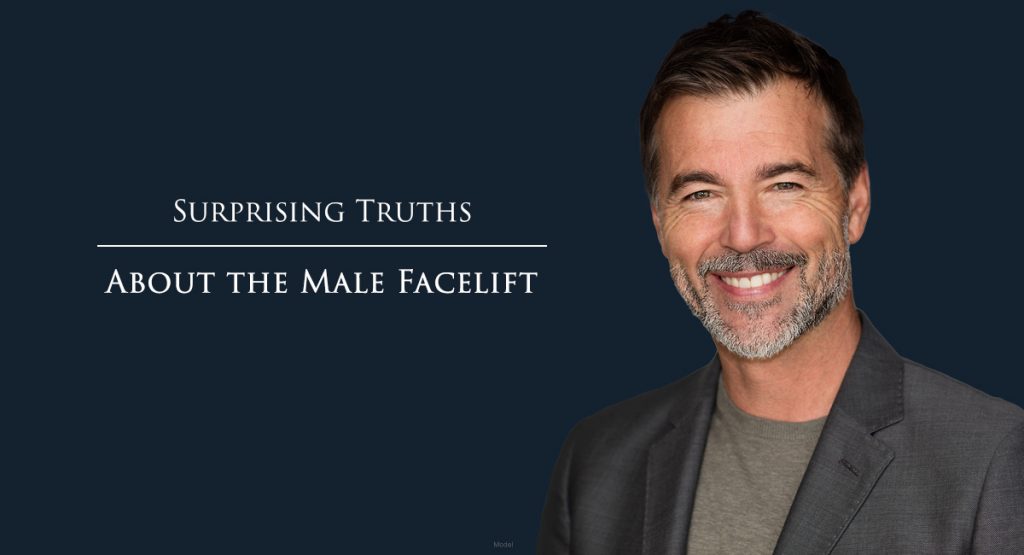
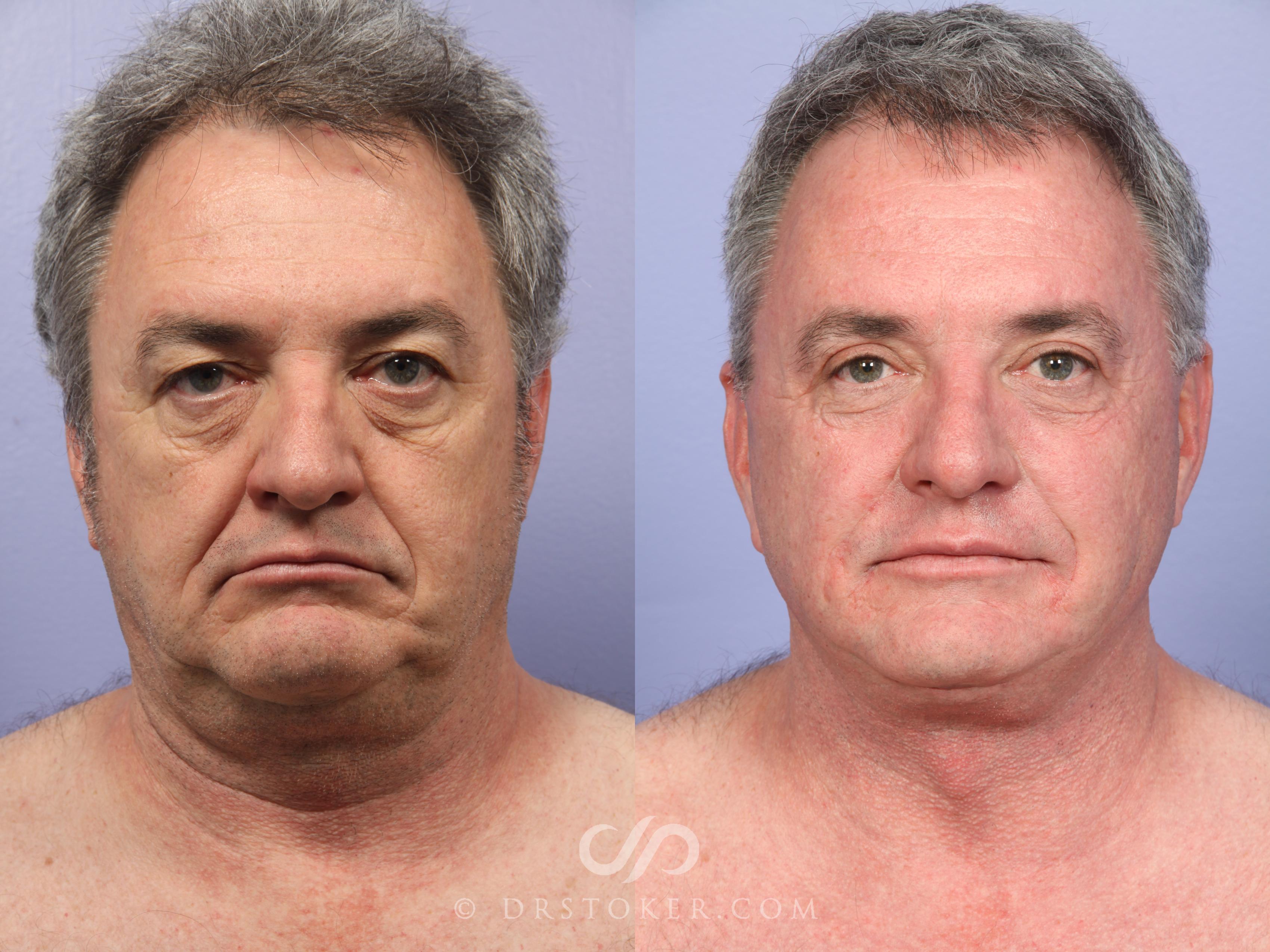
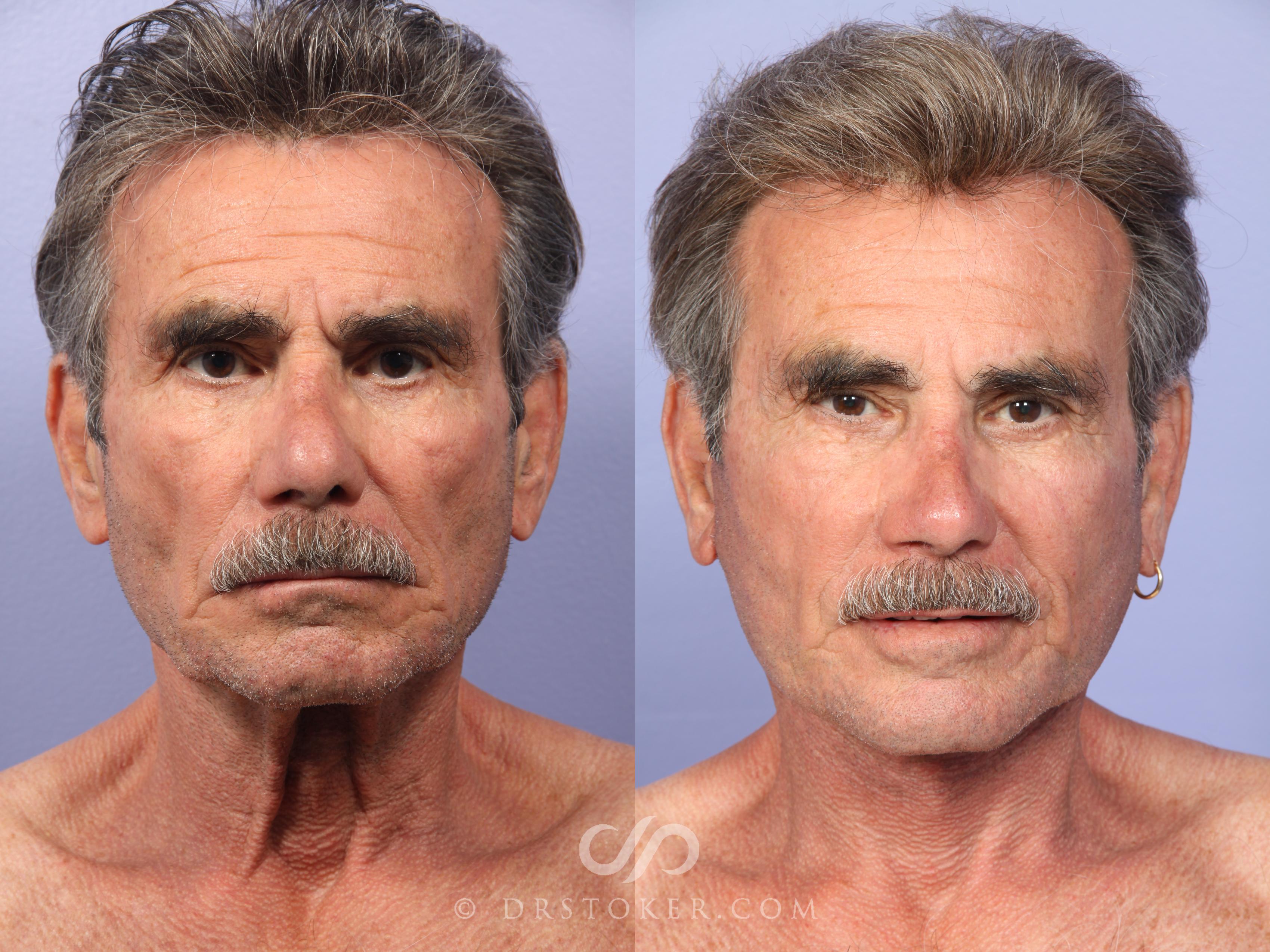
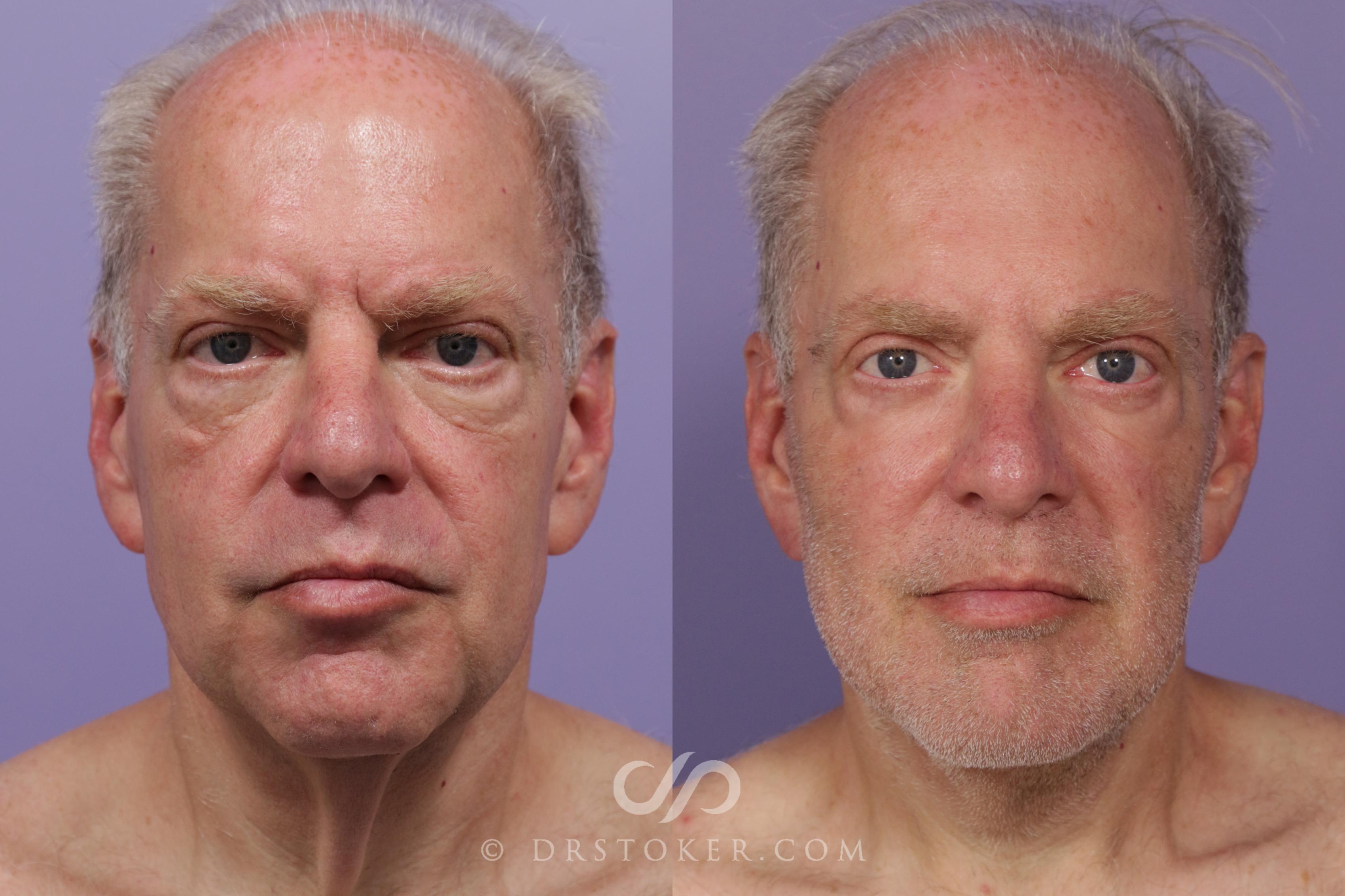
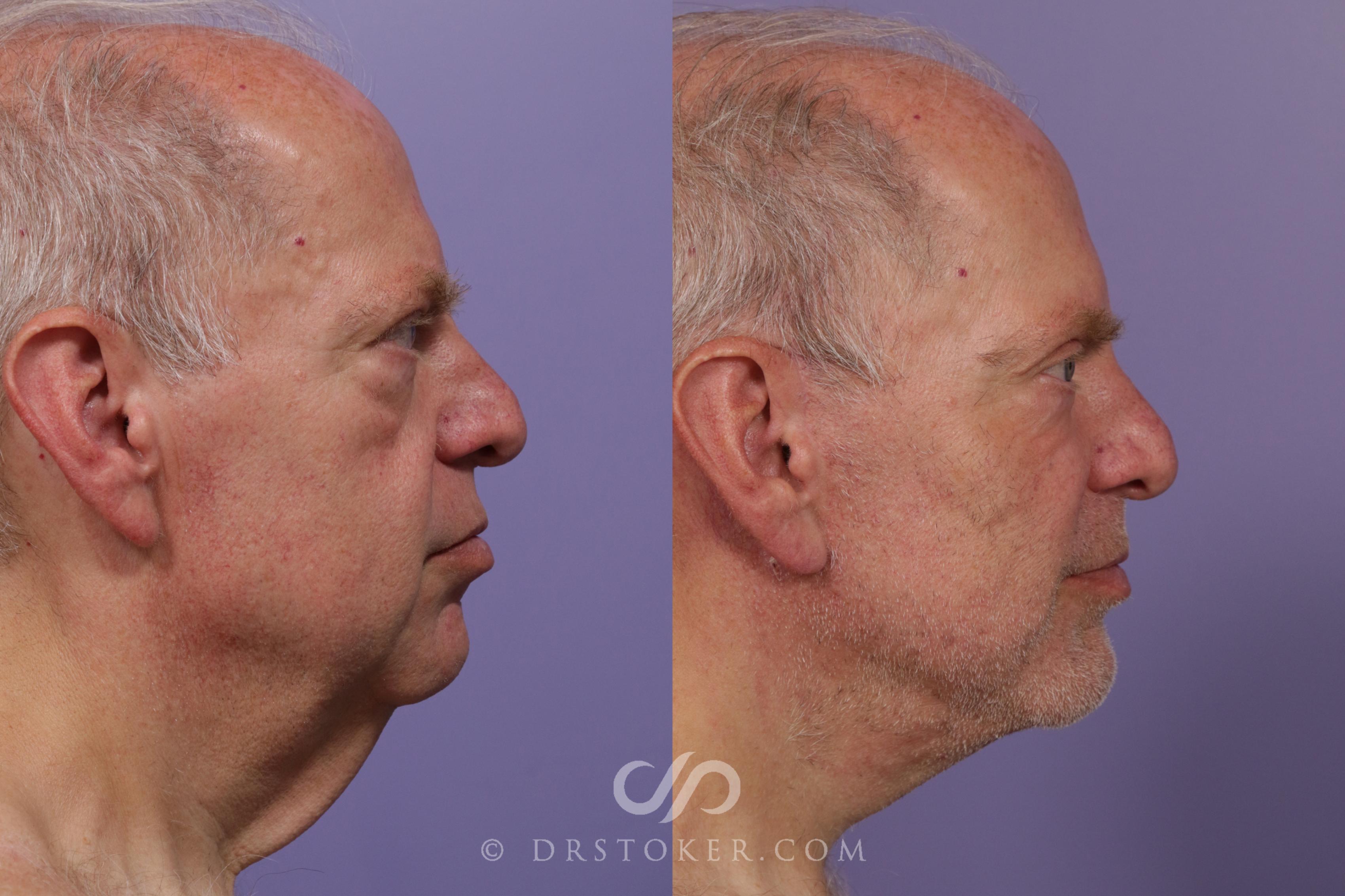
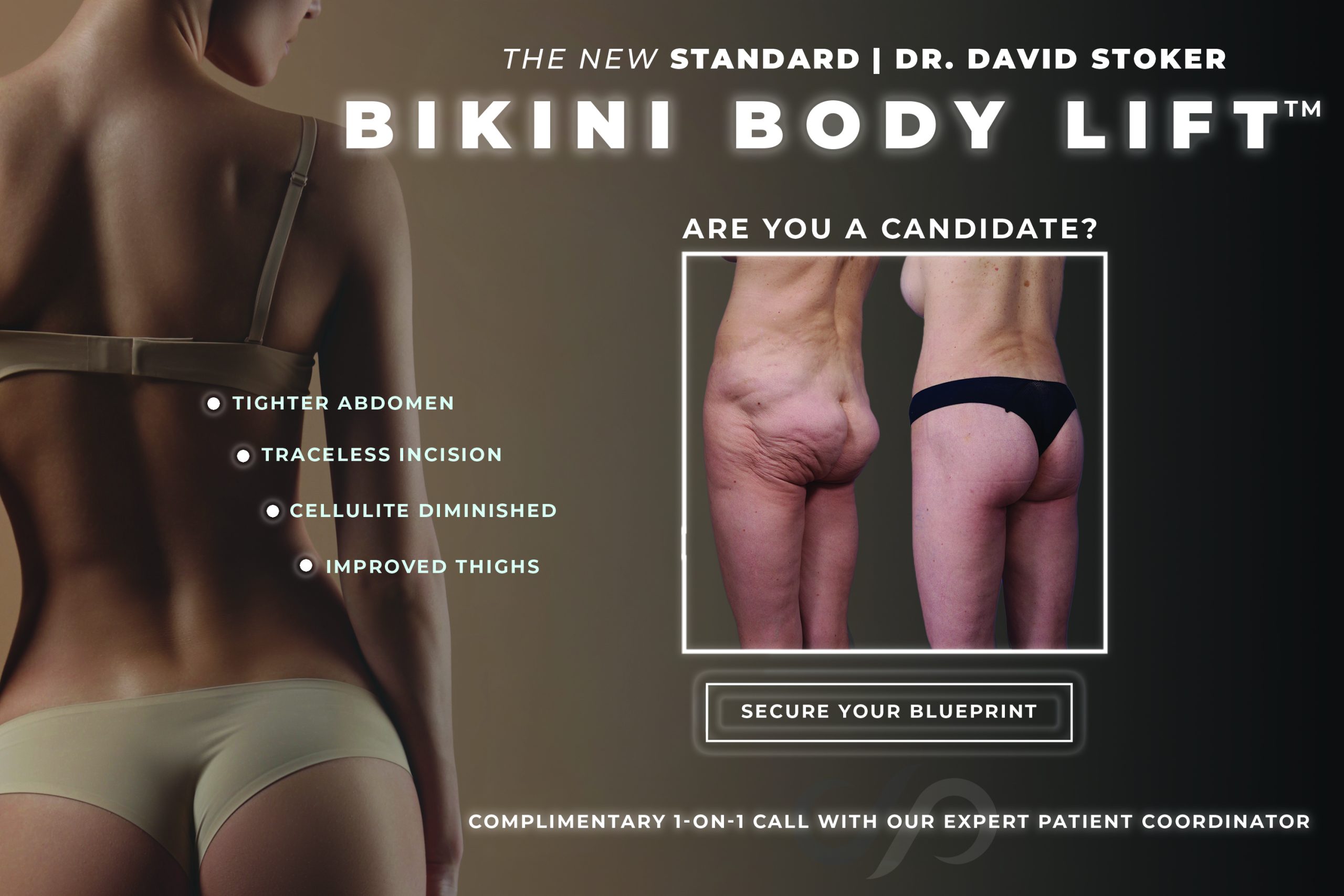
Leave a Reply